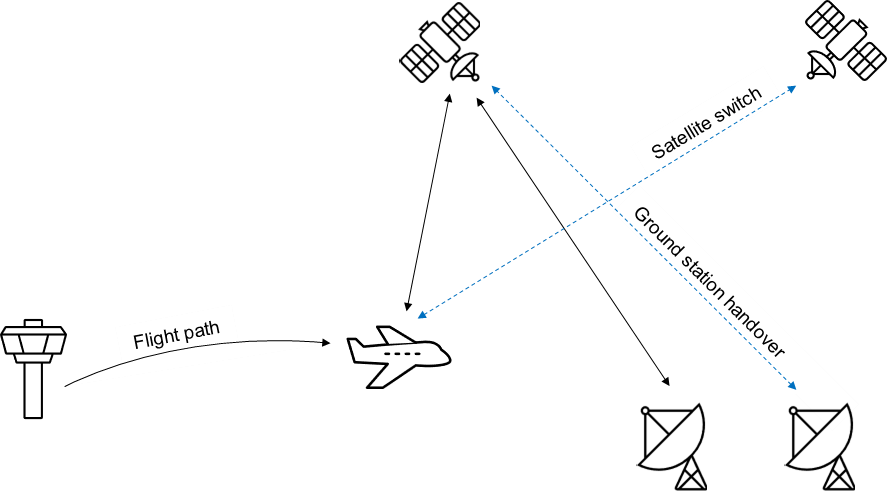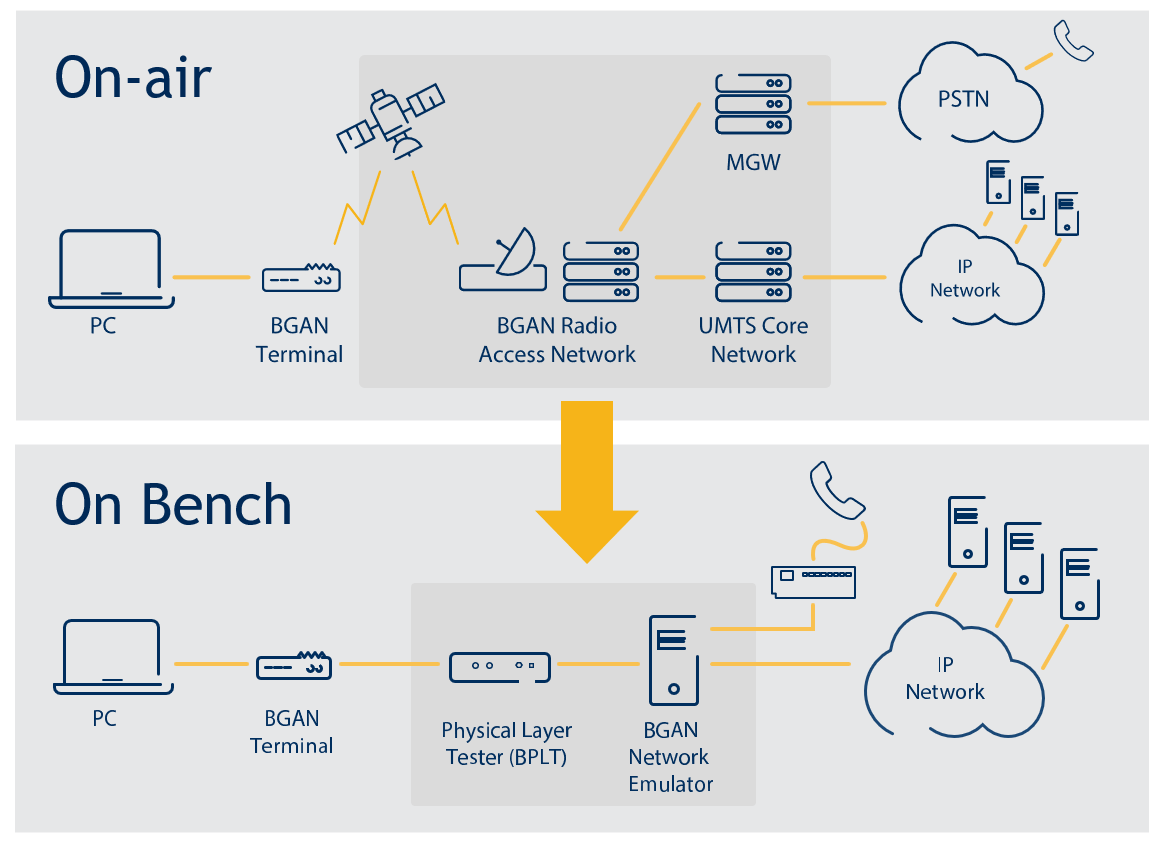
-
StatusOngoing
-
Status date2023-11-27
-
Activity Code6A.085
The Flight Path Emulator (FPE) is a test system used to emulate Inmarsat BGAN satellite data communication, ground station, and core network during flights.
This allows reducing the number of test flights, which are quite expensive, as a significant number of flight tests can be replaced via the use of the FPE.
This enables off-air functional and performance testing of different BGAN aero terminals and aero L-band antenna types taking realistic link impairments into account. The impact of aircraft manoeuvring and the flight path itself can also be investigated.
The FPE address the following use cases:
-
As an SwiftBroadband-Safety terminal manufacturer I want to test my terminal under realistic conditions in a reproducible off-air setup so that I can validate its operation and performance. Realistic conditions include different connection handovers and typical channel impairments.
-
As a system integrator I want to test my terminal using different aircraft antenna configurations so that I can validate its operation and performance. A 3D trajectory input shall emulate aircraft banking and tail blocking and thus result in realistic satellite data link impairments.
-
As an application developer I want the ability to make reproducible tests in an off-air emulated realistic environment so that I can verify operation and performance of my flight management system. Realistic connectivity conditions include bandwidth limitations, delays etc. caused by the position and behaviour of the aircraft.

The project challenge is to simplify as much as possible the creation and execution of a highly complex, realistic, and reproducible connectivity test, where only a relatively simple flight path and antenna characteristics serves as input.
Key product benefits are:
-
Emulate BGAN functionality in a controlled test environment.
-
Emulate typical satcom link impairments.
-
Reduce significantly the number of test flights required to test terminals, installations, and applications.
-
Avoid exposure on the live network.
-
Avoid paying for satcom airtime when testing.
-
Automate, reproduce, and document complex test scenarios.
-
Test end-to-end exchange of any type of user data.
Product capabilities are:
-
Include and use specific antenna transmission characteristics depending on direction between the terminal and the satellite.
-
Emulate aircraft flight path and manoeuvring and adjust radio frequency link parameters accordingly.
-
Validate functionality during handover between beams and satellite ground stations.
The architecture supports emulation of the BGAN radio frequency (RF) interface by emulating the physical layer and the entire BGAN Radio Access Network and Core Network. This way on-air testing is transformed to on-bench testing using a digital twin. The emulation is implemented using a physical layer tester and BGAN network emulator implementing the protocol layers and supporting an interface allowing data exchange to an IP network interface.

The FPE is configured with a given antenna model incorporating the antenna characteristic and a given antenna placement on the aircraft in the test system. Test inputs in the form of a flight path and a 3D aircraft trajectory result in a dynamic RF link along the flight path and an associated signalling with the BGAN network. In addition, different link impairments are automatically and realistically introduced by the FPE as a result of aircraft banking and other manoeuvring. Thus, the connection QoS and network signalling is realistically emulated from a recorded or designed flight path.
The project follows a classic water-fall development schedule starting with requirements development, continuing with design, implementation, integration, and finally testing and release. The total timeframe is 1½ year.
Milestones are as follows:
-
PDR, Q1 2023
-
CDR, Q2 2023
-
TRR, Q1 2024
-
FAT, Q2 2024
-
FR, Q2 2024
The CDR took place on 9th November 2023. The requirement and design activities have been consolidated. Next step is to start the development.



